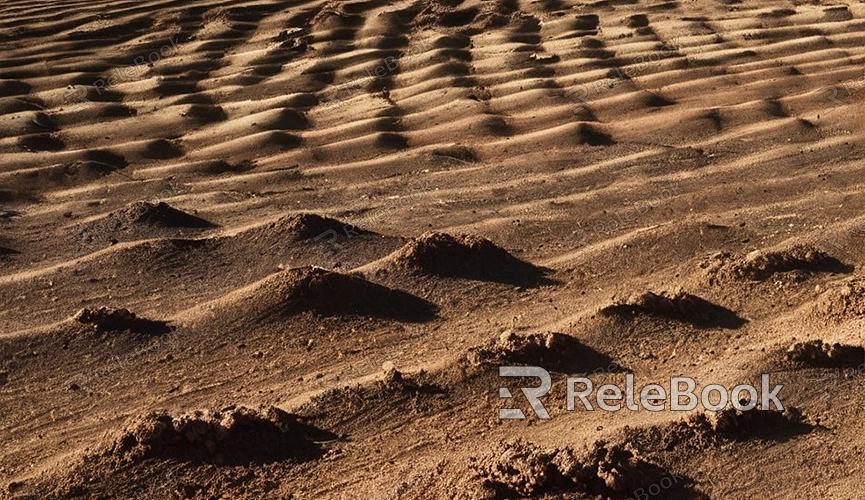Application of Dirt Ground Texture in Blender
What is Dirt Ground Texture?Dirt Ground Texture is a type of texture used to simulate the surface of soil or earth, widely utilized in Blender. This texture is commonly employed to mimic the soil, mud, or earthy texture of the ground, adding realism and a natural atmosphere to 3D scenes.
This 3D texture can be downloaded from Relebook and applied to 3D models or scene rendering through the following steps:
1. Texture Import: Import the Dirt Ground texture material into the Blender project.
2. Application to Model: Apply the texture to the surface of the ground model, ensuring the model is prepared to accept the texture.
3. Mapping Adjustment: Based on the size and shape of the ground model, adjust the mapping of the texture to achieve a natural effect on the model's surface.
4. Material Parameter Adjustment: Fine-tune the material parameters of the ground, such as color, glossiness, etc., to achieve the desired effect.
5. Detail Addition: Add some additional details such as particles, bumps, etc., to enhance the realism and visual appeal of the model.

Different parameter adjustments yield different rendering effects. Here are common rendering scenarios for this 3D texture in Blender:
1. Outdoor Scene Design: Simulate the soil ground in outdoor scenes, adding a sense of nature and realism.
2. Rural Landscape Rendering: Used to render roads or fields in rural scenes, creating a rustic and fresh countryside atmosphere.
3. Surrounding Environment Design for Buildings: Apply Dirt Ground texture around architectural models to add dimensionality and integration to the buildings.
4. Game Scene Production: Used in game development to design ground textures for game scenes, enhancing the visual effects and immersion of games.
5. Film and TV Special Effects Production: Used in movies or animations to simulate real-world soil ground, adding realism and depth to the scenes.
Using dirt ground texture can significantly enhance the realism and detail level of natural scene rendering for models, especially in creating outdoor environments, landscape designs, farmland, forest ground, and any projects requiring natural ground texture representation. Dirt ground texture, by simulating the surface of soil in the natural world, including its color, texture, and irregularities, provides a realistic foundation for 3D models and scenes.
Increase Realism: Dirt ground texture can add a natural and realistic appearance to 3D scenes by simulating different types of soil, such as clay, sand, mud, etc., and their moisture and compaction levels, thus increasing the realism of the scene.
Provide Visual Details: Using dirt ground texture can increase the visual details and complexity of the scene, including soil particles, rocks, cracks, residual vegetation, etc., which are crucial for creating rich and dynamic natural environments.
Enhance Scene Depth and Layering: By adding different types and colors of dirt ground in 3D scenes, visual depth and layering can be created, making the scene more vivid and engaging.
Achieving the dirt ground effect in Blender typically involves using high-quality texture maps, including color maps, displacement maps, normal maps, and roughness maps, to create realistic soil surface effects. Through Blender's powerful material and texture node systems, designers can finely adjust the color, texture depth, moisture effects of the soil, and its interaction with other environmental elements such as vegetation, rocks, and water bodies, thus creating rich and dynamically changing natural scenes. If you need access to high-quality 3D textures and HDRI or 3D model downloads, you can download them directly from Relebook and import the textures and 3D models into your project for immediate use.

